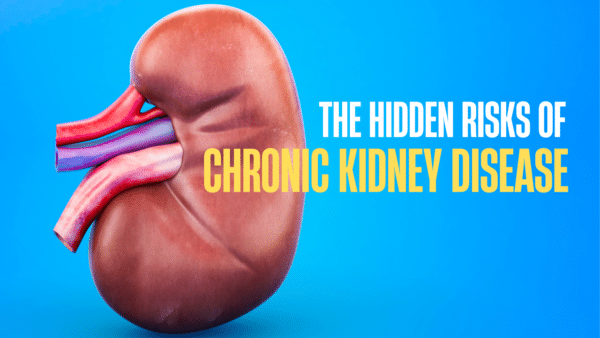When we were kids in school, at some point a medical professional came to class and explained blood types to you. You probably pricked your finger with a sterilized, sharp piece of metal and smeared a bit of blood on a card or slide to look at under a microscope. You were shown what to look for to determine which of the four major blood types you were: A, B, AB or the most common O. You went home afterward. Told your parents. And then promptly forgot about it except to put on your driver’s license. But what do the different blood types mean? Why are they important to know? And what happens if you get it wrong?
Those letters refer to antigens in your blood. Antigens are needed to fight off infection. Basically, really basically, they find what doesn’t belong in your body and attack it, expelling it from the body, so it can heal. To prevent the antigens from attacking things that are supposed to be there, they are “programmed” by our biology to accept antigens that are already there and attack the interlopers. Viruses and bacteria have their own antigens, which is how your body identifies them as not belonging. So, if blood with different antigens is introduced to your system, your body will attack it. Blood with the same antigens, however, will be allowed to stay and work.
Here’s how the blood types break down:
Group A – The surface of the red blood cell contains A antigens and the plasma has an Anti-B antibody, which would attack any blood-containing Blood Type B.
Group B – The surface of the red blood cell contains B antigens and the plasma has an Anti-A antibody, which would attack any blood-containing Blood Type A.
Group AB – The red blood cells contain both A & B antigens, but the plasma doesn’t not have any Anti-A or Anti-B antibodies. So, people with this blood type won’t attack blood given from people with different blood types.
Group O – The exact opposite of AB. The red blood cells contain neither A or B antigens, but the plasma has both Anti-A & Anti-B antibodies. This is why people with O-type blood are called the “universal donors,” because their blood won’t trigger an attack.
Now, some of you are wondering about being positive or negative in blood type. For example, being A positive. What does that mean? It has to do with the RH factor. RH stands for Rhesus Factor. It’s binary, which means you either have an RH factor or you don’t. If you do, you’re considered positive and if you don’t you’re considered negative. RH is a protein in our systems. The lack of it doesn’t mean you’re sick and it usually doesn’t affect your health.
This means there are eight possible outcomes when we’re born or have children. But the odds are not equal among the types, which is why some are considered a “rare” blood type and others more common.
You now know the why behind the different blood types, but when would you need to know this bit of information? There are three very common reasons and treatment can hinge on this knowledge.
The first is probably the most obvious. You got hurt. Bad. You’ve lost a lot of blood already and the hospital needs to give you more. You’ve probably heard that the body holds on average 8 pints of blood, which is both true and not true at the same time. Because we’re all individuals, it’s not one size fits all. Men tend to have more blood because they’re usually bigger in size.
An average sized woman usually has about 9 pints of blood. An average sized man has about 12 pints of blood in him. Usually, the amount of blood a person has is 7 or 8% of their body weight. If you really want to know for yourself, a doctor can run a test and tell you.
In the scenario of injury, you’ll need to be transfused with blood, not just to get you back up to the level you’re supposed to be, but also because lack of blood in the body can cause other problems that can be critical to your health and the doctors don’t have the extra time to spare to deal with that AND treat your injury.
The second reason to know is when donating blood. Each pint donated is marked with the type so it can be stored properly and not accidentally given to someone with a different blood type. It’s helpful if you know what your blood type is going into this situation, but if you don’t, professionals will crosscheck and make sure the label is correct. There are over 9.5 million blood donors in the United States. According to the CDC, about 5 million patients need blood per year.
The same can be said for organ transplants as well. You can’t put the lungs of one type of blood into the body of a person with a different blood type. The body would just reject the organ and you’d be right back where you started from. And considering the length of time organs stay viable for transplant, every extra bit of time makes a successful surgery less and less likely.
The third reason is when dealing with pregnancy. A mother can be one blood type and the child could be a different blood type because its blood is determined by both parents. The last thing anyone wants is to have the mother’s body attack the fetus’ body or vice versa. This can lead to either jaundice or even brain damage if it goes undetected & undiagnosed. The good news is that when this situation pops up, there are things that can be done to make sure the mother and child don’t hurt each other. Injection of anti-D immunoglobin G helps prevent the mother from producing toxic antibodies for the fetus and lessen the impact of the sensitizing event has on the fetus. The effect of the shot will last for 12 weeks and then will have to be done again.
Hopefully, now you have a little more insight into the process and reasoning that goes into knowing and determining blood type. If you don’t know your own blood type for whatever reason, click here. Better to know and not need it, than to need it and not know, especially when the solution is quick & easy!

